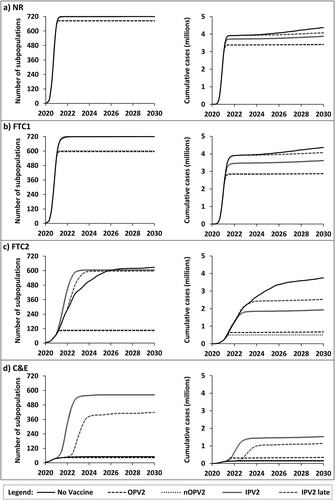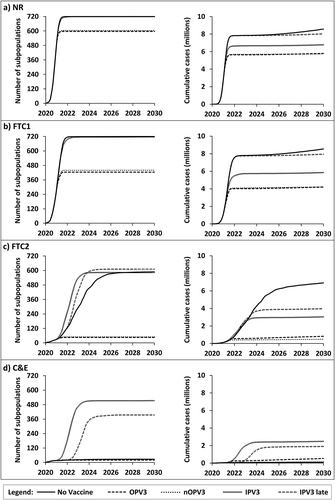Figures & data
Figure 1. Historical timelines of polio (blue font), SARS (green font) and COVID-19 (red font) highlight significantly different pathways to disease discovery and vaccine development. Critical polio milestones spanned nearly a century, and vaccine development preceded molecular characterization of the virus by decades. SARS was contained with no contribution from vaccines, and COVID-19 continues on a path distinct from polio and SARS. For context, global population growth is represented by gray circles drawn to scale from 1.57B in 1890 to 7.79B in 2020 [Citation21]. Superimposed on gray circles are blue circles drawn to the same scale showing growth in global airline passenger volume from 0.31B in 1970 to 4.54B in 2019 [Citation22,Citation23]. The relationship between disease, world population and travel changed substantially between polio, SARS, and COVID-19, with progressively larger global population with significant increase in mixing as seen in air passenger volume
![Figure 1. Historical timelines of polio (blue font), SARS (green font) and COVID-19 (red font) highlight significantly different pathways to disease discovery and vaccine development. Critical polio milestones spanned nearly a century, and vaccine development preceded molecular characterization of the virus by decades. SARS was contained with no contribution from vaccines, and COVID-19 continues on a path distinct from polio and SARS. For context, global population growth is represented by gray circles drawn to scale from 1.57B in 1890 to 7.79B in 2020 [Citation21]. Superimposed on gray circles are blue circles drawn to the same scale showing growth in global airline passenger volume from 0.31B in 1970 to 4.54B in 2019 [Citation22,Citation23]. The relationship between disease, world population and travel changed substantially between polio, SARS, and COVID-19, with progressively larger global population with significant increase in mixing as seen in air passenger volume](/cms/asset/677f2ae1-7e9d-46b7-96d9-8283feab3b90/ierv_a_1891889_f0001_oc.jpg)
Figure 2. The average speed of nWPV1 spread through 720 subpopulations (left) and growth of expected cumulative global incidence of paralytic polio (right) over time as a function of interventions and method of vaccination

Figure 3. The average speed of nWPV2 spread through 720 subpopulations (left) and growth of expected cumulative global incidence of paralytic polio (right) over time as a function of interventions and method of vaccination

Figure 4. The average speed of nWPV3 spread through 720 subpopulations (left) and growth of expected cumulative global incidence of paralytic polio (right) over time as a function of interventions and method of vaccination

Table 1. Probability of eradication (%) for each nWPV serotype as a function of modeled scenarios for the period January 1, 2020 to January 1, 2030. Green boxes highlight probabilities of eradication higher than 95%. Yellow boxes highlight probabilities of eradication between 75% and 95%. Red boxes show probabilities of eradication below 20%
